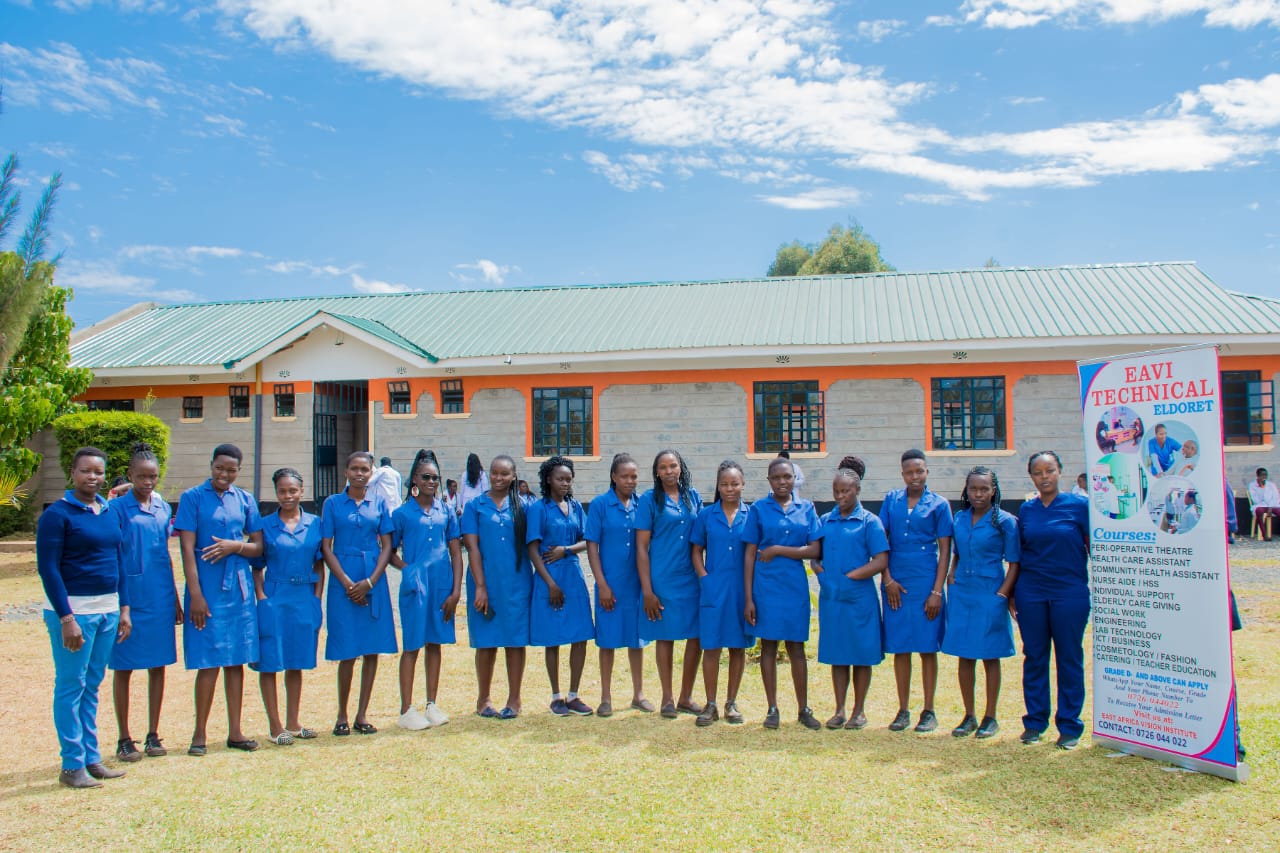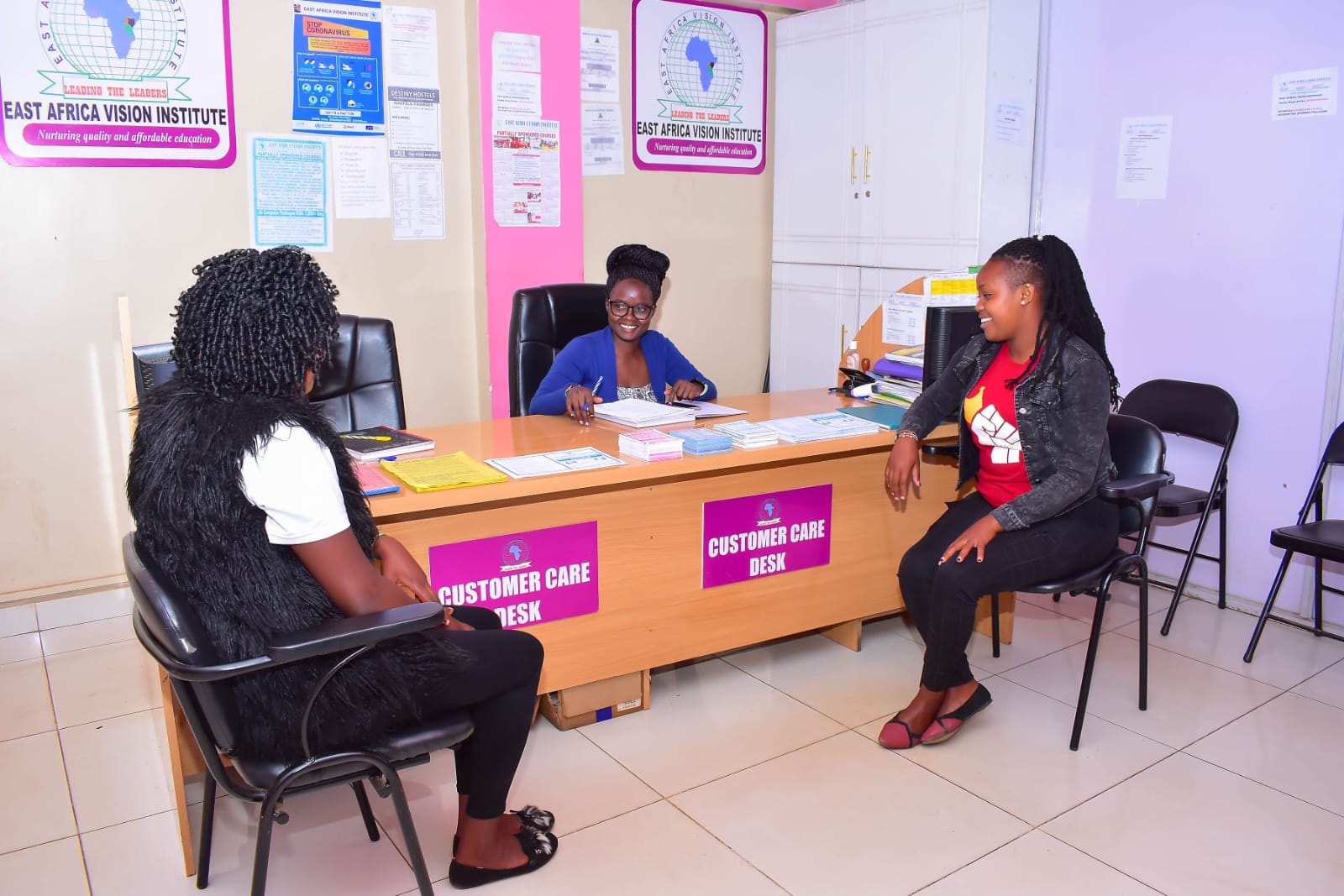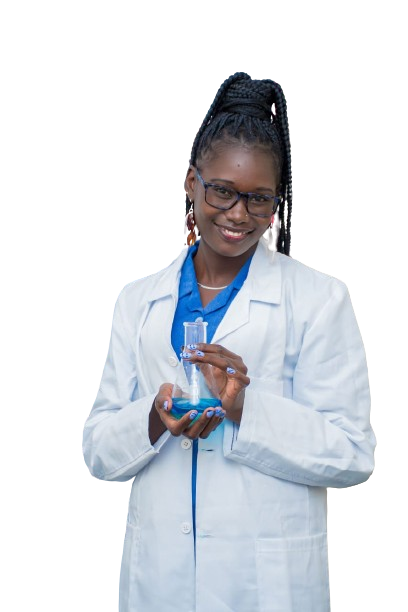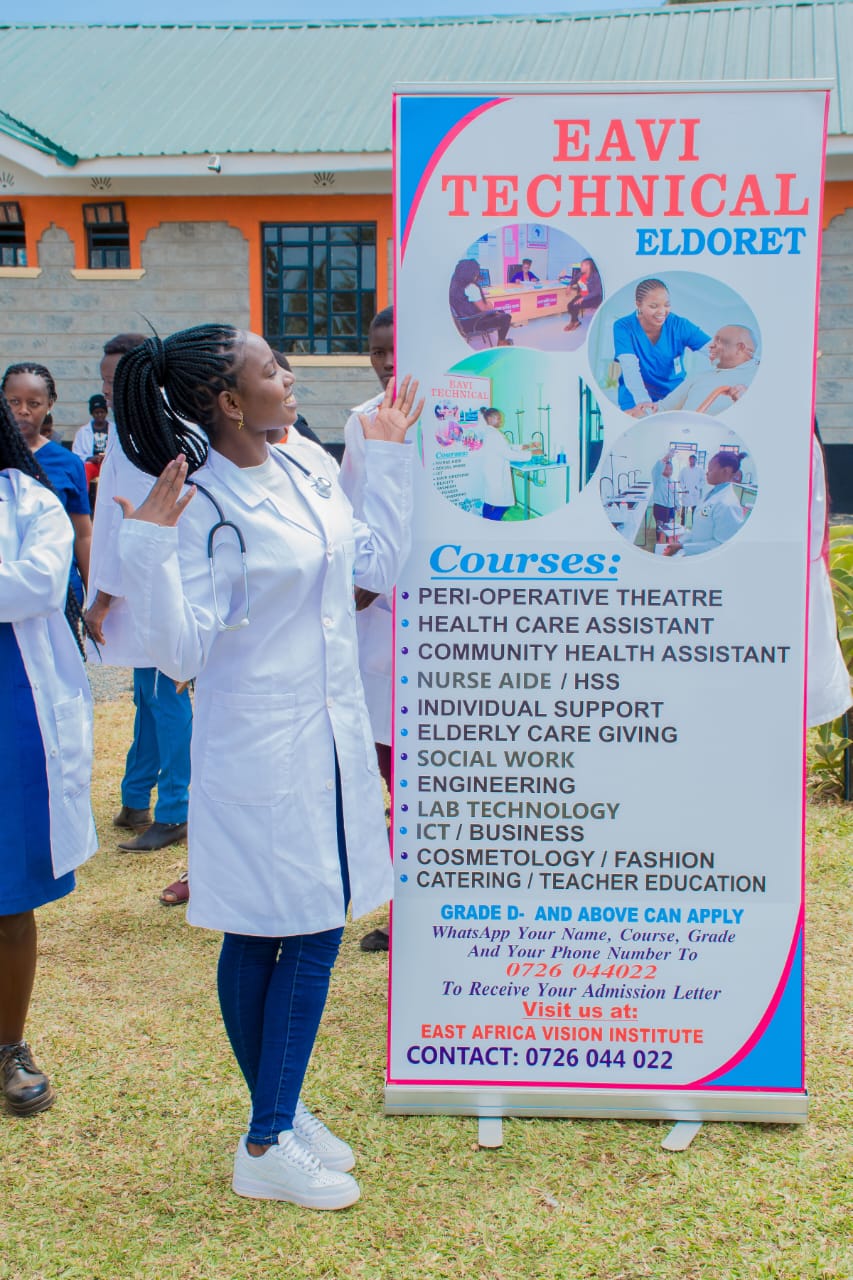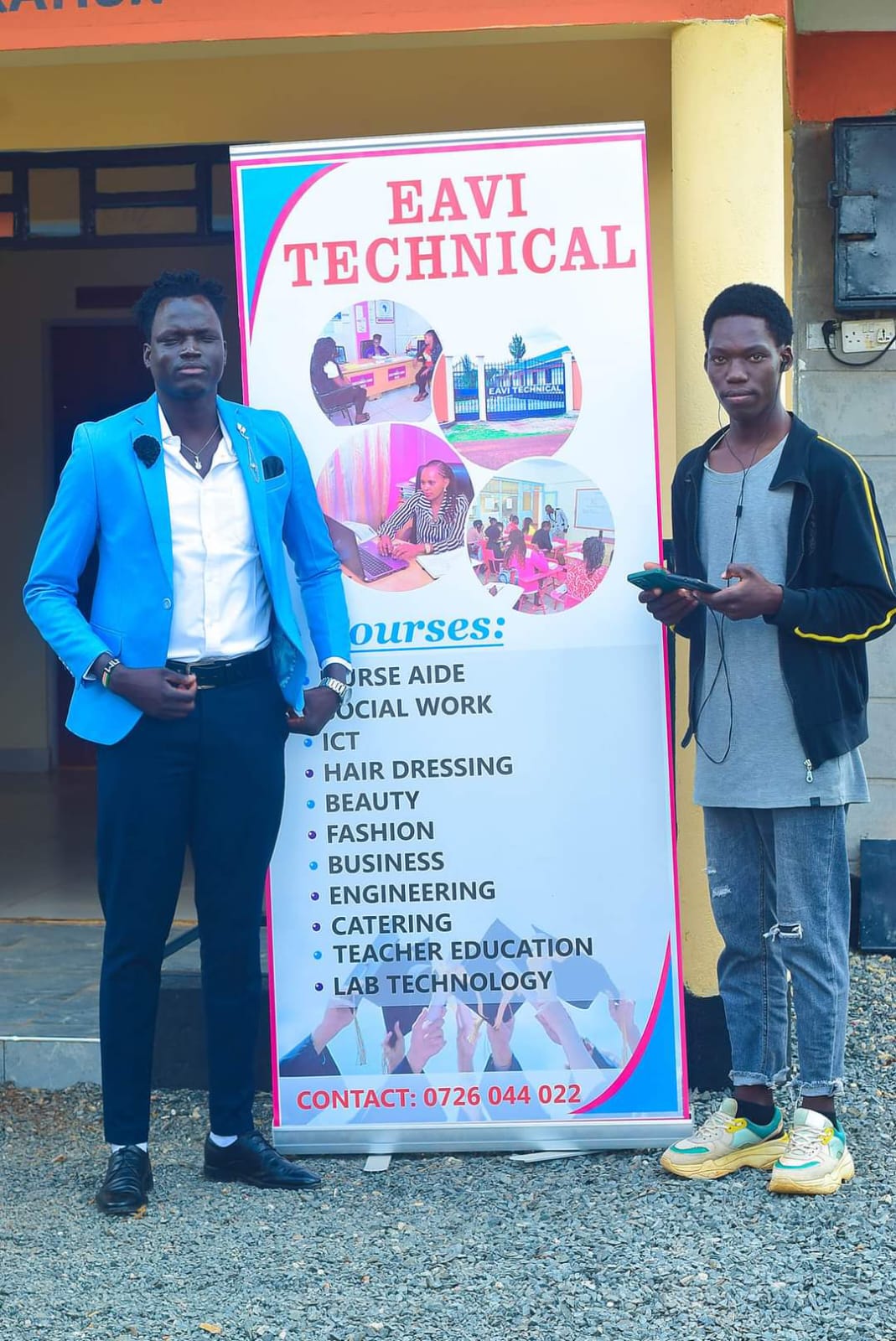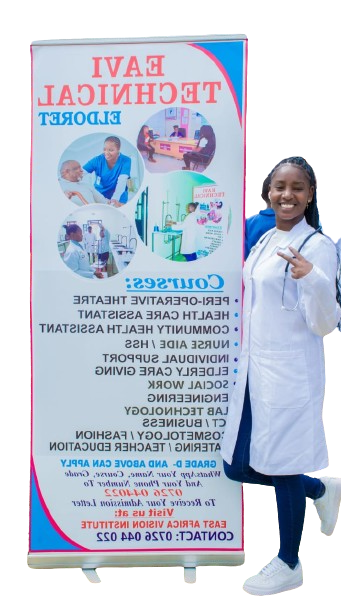"Empowering our students with cutting-edge learning tools on our new Learning Management System (LMS) is a testament to our commitment to academic excellence. Let's embark on this digital journey together and unlock the boundless possibilities of education."
Available courses
COURSE CONTENT
- Introduction to Financial Accounting
- Principles of Accounting
ENTREPRENEURSHIP COURSE OUTLINE
1. Introduction To Entrepreneurship
2. Evolution Of Entreprenership
3. The Entrepreneur
4. Creativity And Innovation
5. Entrepreneurial Culture
6. Entrepreneurial Opportunuities
7. Entrepreneurial Motivation
8. Entrepreneurial Competence
9. Starting A Small Business
10. Business Entreprise Management
11. Financial Management
12. Recording Business Transactions In The Books Of Accounts
13. Marketing
14. Enterprise Social Responsibility And Business Ethics
15. Ict In Entreprise Management
16. Emerging Issues And Trends In Entrepreneurship
Topic 1 Introduction to communications skills
Topic 2 Elements of communication
. Topic 3 Function of Non- verbal communication
Topic 4 Effective communication
Topic 5 Oral Communication
Topic 6 Listening and speaking skills
Topic 7 Writing skills
Topic 8 Building confidence and identifying your own strength in communication (Role plays and group presentations)
Topic 9 Managing conversations more effectively
By the end of this module unit, the learner should be able to:
· Recognize the role of economics in day to day life
· Apply the concept of demand and supply in economic analysis
· Demonstrate an understanding of price determination
· Apply production theory concept in a financial institution
· Demonstrate an understanding of market structures
· Relate the concept of money and banking to banking and financial services business environment
· Demonstrate an understanding of public finance concept
· Assess the relationship between population and unemployment in an economy
· Cope with emerging issues and trends in economics
Topics/Course Outline Required by KNEC
Topic 1: Introduction to Economics
1.1. Meaning of economics
1.2. Scope of economics
1.3. Human wants
1.4. Economic resources
1.5. Concept of scarcity and choice
1.6. Economic systems
Topic 2: Demand Analysis
2.1. Concept of Demand
2.2. Factors affecting demand of a product
2.3. Demand curve derivation
2.4. Shift and movement along a demand curve
2.5. Definition of elasticity of demand
2.6. Types of elasticity of demand
Topic 3: Supply Analysis
3.1. Concept of Supply
3.2. Factors affecting supply of a product
3.3. Supply curve derivation
3.4. Shift and movement along the supply curve
3.5. Elasticity of Supply
3.6. Types of elasticity of supply
Topic 4: Price Determination
4.1. Definition of price
4.2. Determination of Price
4.3. Equilibrium position in the market
Topic 5: Production Theory
5.1. Production concept
5.2. Purpose of production
5.3. Factors of production and their rewards
5.4. Levels of Production
5.5. Law of diminishing returns
Topic 6: Theory of the Firm
6.1. Distinction between firm and industry
6.2. Costs of production
6.3. Concept of revenue
6.4. Economies and diseconomies of scale
6.5. Factors affecting location of an industry
6.6. Optimal size of a firm
Topic 7: Market Structures
7.1. Definition of market
7.2. Types of market structures
7.3. Needs for control of power in market structures
7.4. Ways of controlling powers in different market structures
Topic 8: National Income
8.1. Definition of national income
8.2. Concepts of national income
8.3. Circular flow of national income
8.4. Methods of measuring national income
8.5. Importance of national income statistics
8.6. Factors affecting national income
8.7. Causes of income disparities
8.8. National income equilibrium
Topic 9: Money and Banking
9.1. Definition of money
9.2. Characteristics of money
9.3. Functions of money
9.4. Demand and supply of money
9.5. Meaning of banking
9.6. Functions of commercial banks
9.7. Functions of central bank
9.8. Non-banking financial institutions
Topic 10: Public Finance
10.1. Definition of public finance
10.2. Principle of public finance
10.3. Effects of government expenditure
10.4. Sources of government revenue
10.5. Purpose of taxation
10.6. Principles of taxes
10.7. Types of taxes
10.8. Meaning of fiscal policy
10.9. National budget
10.10. Public debt/borrowing
Topic 11: Inflation
11.1. Definition of Inflation
11.2. Types of Inflation
11.3. Causes of inflation
11.4. Effects of inflation
11.5. Measures used to control inflation
Topic 12: International Trade
12.1. Definition of international trade
12.2. Importance of international trade
12.3. Advantages and disadvantages of international trade
12.4. Theories of comparative advantage and absolute advantage
12.5. Balance of trade
12.6. Balance of payment
12.7. Barriers to international trade
12.8. Exchange rate systems
12.9. Economic integration/regional groupings
12.10. Functions of international monetary fund (IMF) and World Bank
Topic 13: Population and Unemployment
13.1. Definition of population
13.2. Population growth
13.3. Effects of population growth
13.4. Meaning of unemployment
13.5. Causes of unemployment
13.6. Solutions to unemployment
Topic 14: Economic Growth and Development
14.1. Meaning of economic growth and economic development
14.2. Factors determining growth and development
14.3. Need for development planning
Topic 15: Emerging Trends and Issues in Economics
15.1. Emerging economic trends and issues
15.2. Challenges posed by emerging economic trends and issues
15.3. Approaches to manage emerging economic trends and issues
CHAPTER ONE................................................................................................................ 7
INTRODUCTION TO COMPUTERS......................................................................... 7
BASIC HARDWARE UNITS OF A COMPUTER.................................................. 14
Byte – a string of 8 bits.............................................................................................................................. 20
4.5 Working With Files and Folders......................................................................................... 32
5.3 Creating, Saving and Closing Documents....................................................................... 36
6.1 MICROSOFT EXCEL....................................................................................................................... 49
6.3 WORKING WITH WORKBOOKS AND WORKSHEETS............................... 52
6.6 APPLYING BORDERS............................................................................................................. 58
CHAPTER SEVEN......................................................................................................... 68
DATABASE MANAGEMENT SYSTEMS............................................................... 68
7.2 WORKING WITH ACCESS 2000............................................................................................ 71
CHAPTER EIGHT.......................................................................................................... 81
PRESENTATION GRAPHICS...................................................................................... 81
CHAPTER NINE............................................................................................................ 88
COMPUTERS AND COMMUNICATIONS............................................................. 88
9.3 Common Internet services...................................................................................................... 89
COURSE CONTENT
Nature and scope of marketing-Overview of marketing
Marketing Information Systems
Marketing mix
Marketing Environment
Product
Price/Pricing
Place/distribution/Transportation
Promotion/Integratedmarketing/Communication mix
Customer care
Service Marketing
Emerging trendsand issues in Marketing
COURSE CONTENT
Introduction to selling
Process of selling
Sales Display and demonstrations
Sales responsibility and preparation
Personal Selling
Selling and managing key/Major accounts
Travelling sales personnel
Sales setting
Emerging issues in selling
PHYSICAL EDUCATION
BY MADAM HELLEN
KISWAHILI
ART AND CRAFT
Leadership and Management
DEMONSTRATE NUMERACY SKILLS
UNIT CODE: HE/OS/CH/BC/02/6
UNIT DESCRIPTION
This unit describes the competencies required by a worker in order to apply a wide range of mathematical calculations for work; apply ratios, rates and proportions to solve problems; estimate, measure and calculate measurement for work; Use detailed maps to plan travel routes for work; Use geometry to draw and construct 2D and 3D shapes for work; Collect, organize and interpret statistical data; Use routine formula and algebraic expressions for work and use common functions of a scientific calculator
Duration of Unit: 40 hours
Unit Description
This unit covers the competencies required in meeting communication needs of clients and colleagues and developing, establishing, maintaining communication pathways and strategies. It also covers competencies for conducting interview, facilitating group discussion and representing the organization in various forums.
Summary of Learning Outcomes
1. Utilize specialized communication skills processes
2. Develop communication strategies
3. Establish and maintain communication pathways
4. Promote use of communication strategies
5. Conduct interview
6. Facilitate group discussion
7. Represent the organization
Duration of Unit: 60 hours
Unit Description
This unit describes the competencies required by a worker in order to apply a wide range of mathematical calculations for work; apply ratios, rates and proportions to solve problems; estimate, measure and calculate measurement for work; Use detailed maps to plan travel routes for work; Use geometry to draw and construct 2D and 3D shapes for work; Collect, organize and interpret statistical data; Use routine formula and algebraic expressions for work and use common functions of a scientific calculator
Summary of Learning Outcomes
1. Apply a wide range of mathematical calculations for work
2. Apply ratios, rates and proportions to solve problems
3. Estimate, measure and calculate measurement for work
4. Use detailed maps to plan travel routes for work
5. Use geometry to draw and construct 2D and 3D shapes for work
6. Collect, organize and interpret statistical data
7. Use routine formula and algebraic expressions for work
8. Use common functions of a scientific calculator
Duration of Unit: 60 hours
Unit Description
This unit describes competencies required to use a computer and other digital devices for the purposes of communication, work performance and management at the workplace.
Summary of Learning Outcomes
1. Identify computer software and hardware
2. Apply security measures to data, hardware, software in automated environment
3. Apply computer software in solving tasks
4. Apply internet and email in communication at workplace
5. Apply desktop publishing in official assignments
6. Prepare presentation packages
Duration of Unit: 100 hours
Unit description
This unit describes the competencies critical to demonstration of entrepreneurial aptitudes. It involves, developing business innovation strategies, developing new markets, customer base, expanding employed capital and undertaking regional/county expansion while retaining motivated staff.
Summary of Learning Outcomes
- Develop business innovation strategies
- Develop new products/ markets
- Expand customers and product lines
- Motivate all staff/workers
- Expand employed capital base
- Undertake regional/county business expansion
1
Duration of Unit: 80 hours
Unit Description
This unit covers competencies required to demonstrate employability skills. It involves competencies for exuding self-awareness and ability to deal with everyday life challenges; demonstrating critical safe work habits and leading a workplace team; planning and organizing work activities; applying learning, creativity and innovativeness in workplace functions; pursuing professional growth and managing time effectively in the workplace.
Summary of Learning Outcomes
- Develop self-awareness and ability to deal with life challenges
- Demonstrate critical safe work habits for employees
- Lead a workplace team
- Plan and organize work
- Maintain professional growth and development in the workplace.
- Demonstrate learning, creativity and innovativeness in the workplace.
Duration of Unit: 40 hours
Unit Description
This unit describes the competencies required to control environmental hazard, control environmental pollution, comply with workplace sustainable resource use, evaluate current practices in relation to resource usage, identify environmental legislations/conventions for environmental concerns, implement specific environmental programs, monitor activities on environmental protection/programs, analyse resource use and develop resource conservation plans.
Summary of Learning Outcomes
1. Control environmental hazard
2. Control environmental Pollution
3. Demonstrate sustainable resource use
4. Evaluate current practices in relation to resource usage
5. Identify Environmental legislations/conventions for environmental concerns
6. Implement specific environmental programs
7. Monitor activities on Environmental protection/Programs
8. Analyze resource use
9. Develop resource conservation plans
Duration of Unit: 25 hours
Unit Description
This unit describes the competencies required to comply with regulatory and organizational requirements for occupational safety and health.
Summary of Learning Outcomes
1. Identify workplace hazards and risk
2. Identify and implement appropriate control measures to hazards and risks
3. Implement OSH programs, procedures and policies/guidelines
Duration of Unit: 96 hours
Unit Description
This unit specifies the competencies required to demonstrate the knowledge of human anatomy and physiology. It involves demonstrating the knowledge of organization of the human body, body fluids and their functions, body tissues and membranes and their functions, body cavities, human skeletal system, major muscles of the body and their functions, body joints, circulatory system, lymphatic system, endocrine system and its functions, nervous system and its function, digestive system and its function, urinary system and its function respiratory system and its function, special senses and their functions, reproductive system and its functions.
Summary of Learning Outcomes
1. Demonstrate knowledge of organization of the human body
2. Demonstrate knowledge of body fluids and their functions
3. Demonstrate knowledge of body tissues and membranes and their functions
4. Demonstrate knowledge of body cavities
5. Demonstrate knowledge of the human skeletal system
6. Demonstrate knowledge of the major muscles of the body and their functions
7. Demonstrate knowledge of the body joints
8. Demonstrate knowledge of circulatory system
9. Demonstrate knowledge of the lymphatic system
10. Demonstrate knowledge of the endocrine system and its functions
11. Demonstrate knowledge of the nervous system and its function
12. Demonstrate knowledge of the digestive system and its function
13. Demonstrate knowledge of the urinary system and its function
14. Demonstrate knowledge of the respiratory system and its function
15. Demonstrate knowledge of the special senses and their functions
16. Demonstrate knowledge of the reproductive system and its functions
Duration of Unit: 96 hours
Unit Description
This unit specifies the competencies required to apply basic hospital procedures. It involves demonstrating the knowledge of a health facility set up, medical equipment in basic patient care identifying elements of total-patient-care and applying basic patient care procedures.
Summary of Learning Outcomes
1. Demonstrate the knowledge of a health facility set up
2. Demonstrate the knowledge of medical equipment in basic patient care
3. Identify elements of total-patient-care
4. Apply basic patient care procedures
Duration of Unit: 96 hours
Unit Description
This unit specifies the competencies required to demonstrate the knowledge of common diseases. It involves identifying the stages of disease development, demonstrating the knowledge of communicable diseases, non-communicable diseases and management of common diseases
Summary of Learning Outcomes
1. Identify the stages of disease development
2. Demonstrate the knowledge of communicable diseases
3. Demonstrate the knowledge of non-communicable diseases
4. Demonstrate the knowledge on management of common diseases
Duration of Unit: 96 hours
Unit Description
This unit specifies the competencies required to provide first aid. It involves providing cardio- pulmonary resuscitation; managing choking, burns, scalds, trauma, nose bleeding, cuts, fractures, drowning, poisoning and snake bites. It also involves assisting patients with existing conditions such as asthma, epilepsy and diabetes.
Summary of Learning Outcomes
1. Assess the nature and extent of injury or illness
2. Provide first aid intervention
3. Evaluate first aid intervention
4. Wind-up first aid intervention
Duration of unit: 80 hours
Relationship to Occupational Standards
This unit standard specifies the competencies required to apply medical legal ethics in OTT.
It involves acquiring knowledge on the medical-legal and ethical issues, applying medical-legal ethics, and liaising with law enforcement team. It also involves documenting medical legal & ethical issues in OTT.
Summary of Learning Outcomes
- Acquire knowledge medical- legal ethics in OTT
- Apply medical legal ethics in OTT
- Liaise with law enforcement team on medical legal and ethical issues
- Document medical legal- ethical issues in OTT
Duration of Unit: 96 hours
Unit Description
This unit standard specifies the competencies required to Provide Health Education and Promotion.
It involves identifying and assessing health education and promotion needs, developing objectives, planning, implementing, evaluating and documenting health promotion and education activities.
Its main objective is to enlighten a person or a community on health care.
Summary of Learning Outcomes
1. Carry out needs assessment on health education and promotion
2. Develop objectives for health education and promotion
3. Plan health education and promotion
4. Implement action plan for health education and promotion
5. Monitor and evaluate health education and promotion
6. Document health education and promotion
Duration of Unit: 96 hours
Unit Description
This unit standard specifies the competencies required to provide psychosocial healthcare support services. It involves identifying and assessing patients for psychosocial healthcare, caring for patients with psychosocial health needs, linking same patients to appropriate psychosocial healthcare, following–up on psychosocial healthcare support and documenting psychosocial health support services.
Summary of Learning Outcomes
1. Identify and assess patients for psychosocial healthcare need
2. Care for patients with psychosocial health needs
3. Follow up on psychosocial healthcare support
4. Document psychosocial healthcare support
Duration of Unit: 400 hours
Unit Description
This unit describes the competencies required to execute perioperative theatre safety precautions. It involves wearing of personal Perioperative Theatre protective gears, verifying perioperative theatre checklist, patient care, proper handling of surgical instruments and consumables as well as responding to alarms in an Operation Theatre, followed in the context of theatre setting.
Summary of Learning Outcomes
1. Plan and prepare for Perioperative Theatre safety
2. Verify Perioperative Theatre checklist
3. Care for patient and theatre team
4. Handle instruments, apparatus and consumables
5. Respond to Operation Theatre alarms
6. Evaluate and wind-up Perioperative Theatre safety
Duration of Unit: 400 hours
Unit Description
This unit describes the competencies required to prevent and control nosocomial infections. It involves handling Operation Theatre instruments and patients in the Operation Theatre room. Necessary precautions are taken in the context of theatre setting to avoid infections.
Summary of Learning Outcomes
- Prepare surgical instruments
- Prepare patient for surgery
- Dispose theatre waste
Duration of Unit: 400 hours
Unit Description
This unit describes the competencies required in maintaining Operation Theatre instruments and apparatuses. It involves necessary precautions importantly followed in the context of Operation Theatre setting to avoid breakage, accidents, and infection. It also includes general repair of Operation Theatre instruments and apparatus.
Summary of Learning Outcomes
- Prepare to dis-assemble and assemble Operation Theatre instruments
- Check and assemble Operation Theatre instruments
- Pack and sterilize Operation Theatre instruments
- Store Operation Theatre instruments and apparatus
- Evaluate care of instruments and apparatuses in Operation Theatre
Duration of Unit: 400 hours
Unit Description
This unit describes the competencies required to Provide Perioperative Theatre Technical Services which involves testing, operating and organizing surgical instruments and apparatuses.
Summary of Learning Outcomes
1. Prepare to provide Perioperative Operation Theatre Technical services
2. Perform Perioperative Theatre Technical services
3. Evaluate Perioperative Theatre Technical services
4. Wind-up Perioperative Theatre Technical services
Duration of Unit: 300 hours
Unit Description
This unit describes the competencies required to execute Perioperative Theatre administrative services. It involves implementation of Perioperative Theatre policies and performing perioperative administrative duties. It also entails the day to day running of Operation Theatre facility.
Summary of Learning Outcomes
1) Plan perioperative theatre administrative duties
2) Provide perioperative theatre supervisory services
3) Implement perioperative theatre administrative policies
4) Provide liaison for perioperative theatre services
5) Monitor and evaluate delivery of Perioperative Theatre services
Duration of Unit: 300 hours
Unit Description
This unit describes the knowledge, skills and attitudes required to manage Perioperative Theatre resources. It involves planning, organizing, directing and controlling Perioperative Theatre resources and activities. It also involves documenting Operation Theatre resources.
Summary of Learning Outcomes
1) Plan and Prepare to Manage Perioperative Theatre resources
2) Organise Perioperative Theatre resources
3) Direct Perioperative Theatre resources
4) Control Perioperative Theatre resources
Document Perioperative Theatre resources
Duration of Unit: 500 hours
Unit Description
This unit describes the competencies required to participate in provision of Perioperative Theatre Clinical Services. It involves preparing emergency trolley, undertaking patients’ and procedure verification, patient wheeling, assisting in inducing, monitoring and reversal of the patient.
Summary of Learning Outcomes
1. Prepare for Perioperative Theatre clinical services
2. Assist in Perioperative Theatre clinical services
3. Evaluate Perioperative Theatre clinical services
4. Wide-up Perioperative Theatre clinical services
COURCE OUTLINE
Define fractions
This unit addresses the unit of competency: Demonstrate communication skills
Duration of Unit: 25 hours
Unit Description
This unit describes the competencies required to use specialized communication skills to meet specific needs of internal and external clients, conduct interviews, facilitate discussion with groups and contribute to the development of communication strategies.
Summary of Learning Outcomes
- Meet communication needs of clients and colleagues
- Contribute to the development of communication strategies
- Conduct interviews
- Facilitate group discussions
- Represent the organization
Duration of Unit: 40 hours
Unit Description
This unit covers the competencies required to perform numerical functions. The person who is competent in this unit shall be able to: Calculate with whole numbers and familiar fractions, decimals and percentages for work; Estimate, measure, and calculate with routine metric measurements for work; Use routine maps and plans for work; Interpret, draw and construct 2D and 3D shapes for work; Interpret routine tables, graphs and charts for work; Collect data and construct routine tables and graphs for work; and Use basic functions of calculator
Summary of Learning Outcomes
- Calculate with whole numbers and familiar fractions, decimals and percentages for work
- Estimate, measure and calculate with routine metric measurements for work
- Use routine maps and plans for work
- Interpret, draw and construct 2D and 3D shapes for work
- Interpret routine tables, graphs and charts for work
- Collect data and construct routine tables and graphs for work
- Use basic functions of calculator
This unit addresses the unit of competency: Demonstrate entrepreneurial skills
Duration of unit: 70 hours
Unit description
This unit describes the competencies critical to demonstration of entrepreneurial aptitudes. It involves, developing business innovation strategies, developing new markets, customer base, expanding employed capital and undertaking regional/county expansion while retaining motivated staff.
Summary of Learning Outcomes
1. Develop business innovation strategies
2. Develop new products/ markets
3. Expand customers and product lines
4. Motivate all staff/workers
5. Expand employed capital base
6. Undertake regional/county business expansion
This unit addresses the Unit of Competency: Demonstrate digital literacy
Duration of Unit: 45 hours
Unit Description
This unit describes competencies required to use a computer and other digital devices for the purposes of communication, work performance and management at the workplace.
Summary of Learning Outcomes
1. Identify computer software and hardware
2. Apply security measures to data, hardware, software in automated environment
3. Apply computer software in solving tasks
4. Apply internet and email in communication at workplace
5. Apply desktop publishing in official assignments
6. Prepare presentation packages
This unit addresses the Unit of Competency: Demonstrate Knowledge of Human Anatomy and Physiology
Duration of Unit: 100 hours
Unit Description
This unit specifies the competencies required to demonstrate the knowledge of human anatomy and physiology. It involves demonstrating the knowledge of organization of the human body, body fluids and their functions, body tissues and membranes and their functions, body cavities, human skeletal system, major muscles of the body and their functions, body joints, circulatory system, lymphatic system, endocrine system and its functions, nervous system and its function, digestive system and its function, urinary system and its function respiratory system and its function, special senses and their functions, reproductive system and its functions.
Summary of Learning Outcomes
- Demonstrate knowledge of organization of the human body
- Demonstrate knowledge of body fluids and their functions
- Demonstrate knowledge of body tissues and membranes and their functions
- Demonstrate knowledge of body cavities
- Demonstrate knowledge of the human skeletal system
- Demonstrate knowledge of the major muscles of the body and their functions
- Demonstrate knowledge of the body joints
- Demonstrate knowledge of circulatory system
- Demonstrate knowledge of the lymphatic system
- Demonstrate knowledge of the endocrine system and its functions
- Demonstrate knowledge of the nervous system and its function
- Demonstrate knowledge of the digestive system and its function
- Demonstrate knowledge of the urinary system and its function
- Demonstrate knowledge of the respiratory system and its function
- Demonstrate knowledge of the special senses and their functions
Demonstrate knowledge of the reproductive system and its functions
This unit addresses the Unit of Competency: apply basic hospital procedures
Duration of Unit: 110 hours
Unit Description
This unit specifies the competencies required to apply basic hospital procedures. It involves demonstrating the knowledge of a health facility set up, medical equipment in basic patient care identifying elements of total-patientcare and applying basic patient care procedures.
Summary of Learning Outcomes
- Demonstrate the knowledge of a health facility set up
- Demonstrate the knowledge of medical equipment in basic patient care
- Identify elements of total patientcare
- Apply basic patient care procedures
This unit addresses the Unit of Competency: demonstrate the knowledge of common diseases
Duration of Unit: 80 hours
Unit Description
This unit specifies the competencies required to demonstrate the knowledge of common diseases. It involves identifying the stages of disease development, demonstrating the knowledge of communicable diseases, non-communicable diseases and management of common diseases
Summary of Learning Outcomes
- Identify the stages of disease development
- Demonstrate the knowledge of communicable diseases
- Demonstrate the knowledge of non-communicable diseases
- Demonstrate the knowledge on management of common diseases
Relationship to Occupational Standards
This unit addresses the Unit of Competency: Provide First Aid Services
Duration of Unit: 70 hours
Unit Description
This unit specifies the competencies required to provide first aid. It involves providing cardio- pulmonary resuscitation; managing choking, burns, scalds, trauma, nose bleeding, cuts, fractures, drowning, poisoning and snake bites. It also involves assisting patients with existing conditions such as asthma, epilepsy and diabetes.
Summary of Learning Outcomes
1. Assess the nature and extent of injury or illness
2. Provide first aid
3. Evaluate first aid service
4. Wind-up first aid
Relationship to Occupational Standards
This unit standard specifies the competencies required to apply medical legal ethics in OTT. It involves acquiring knowledge on the medical-legal and ethical issues, applying medical-legal ethics, and liaising with law enforcement team. It also involves documenting medical legal & ethical issues in OTT.
Duration of Unit: 40 hours
Summary of Learning Outcomes
- Acquire knowledge medical- legal ethics in OTT
- Apply medical legal ethics in OTT
- Liaise with law enforcement team on medical legal and ethical issues
- Document medical legal- ethical issues in OTT
Skip site announcements

